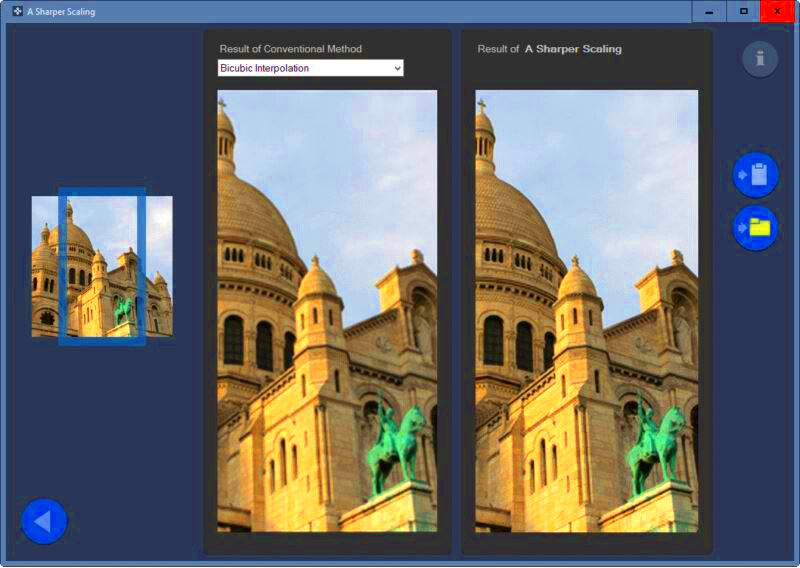Image scaling is the process of resizing images to fit different dimensions without losing quality. Whether you're working on a website, a presentation, or social media, understanding image scaling is crucial. Proper scaling ensures your images look great on any device, loading quickly and maintaining clarity. If images are too large, they can slow down your website, while images that are too small can appear pixelated and unprofessional.
Here are a few reasons why image scaling is important:
- Improved User Experience: Well-scaled images enhance visual appeal, making your content more engaging.
- Faster Loading Times: Smaller images load quickly, reducing bounce rates.
- Better SEO: Optimized images can improve search engine rankings.
- Consistent Design: Uniform image sizes create a cohesive look across your project.
Learn About Harlowe Features for Image Scaling

Harlowe is a powerful tool for scaling images, offering features that cater to both beginners and advanced users. Understanding these features can help you make the most of your image scaling process.
Some key features of Harlowe include:
- Intuitive User Interface: Harlowe’s interface is user-friendly, making it easy to navigate and use.
- Multiple Scaling Options: You can choose from various scaling methods, including stretch, fit, and fill, allowing you to select the best option for your needs.
- Preview Functionality: Harlowe lets you preview changes in real time, so you can see how your images will look before finalizing adjustments.
- Batch Processing: If you have multiple images to scale, Harlowe allows you to apply settings to multiple files at once, saving you time.
Prepare Your Images for Scaling with Harlowe
Before you start scaling images with Harlowe, it's essential to prepare them properly. Taking the right steps will ensure a smoother process and better results. Here’s how you can get ready:
- Choose the Right Image Format: Use formats like JPEG, PNG, or GIF depending on your needs. JPEG is great for photographs, while PNG is better for graphics with transparent backgrounds.
- Assess Original Image Quality: Ensure your original images are of high quality. Low-resolution images will not improve with scaling.
- Backup Your Images: Before making any changes, create backups of your original files. This way, you can always revert if needed.
- Determine Desired Dimensions: Know the dimensions you want for your images. This helps in selecting the correct scaling option in Harlowe.
By following these steps, you’ll set yourself up for successful image scaling with Harlowe.
Step by Step Guide to Scale Images Using Harlowe
Scaling images with Harlowe is a straightforward process that anyone can master. This guide will walk you through each step to ensure your images are resized effectively and look fantastic. Let’s get started!
- Open Harlowe: Launch the Harlowe application on your device. You’ll be greeted by a clean interface that’s easy to navigate.
- Upload Your Image: Click on the “Upload” button and select the image you want to scale. Harlowe supports various formats, including JPEG and PNG.
- Select Scaling Options: Choose your scaling method. You can pick from options like stretch, fit, or fill based on your project’s needs.
- Adjust Dimensions: Enter the desired width and height for your image. You can also maintain the aspect ratio by checking the appropriate box.
- Preview Changes: Click on the preview option to see how your image will look after scaling. This helps you catch any issues before finalizing.
- Save Your Image: Once satisfied with the preview, click “Save.” Choose the location and format for your resized image.
- Review and Optimize: After saving, check the image quality and optimize if necessary using Harlowe’s built-in tools.
By following these steps, you'll have your images perfectly scaled and ready for use!
Common Challenges When Scaling Images
While scaling images in Harlowe is generally easy, you may encounter a few common challenges. Knowing these issues can help you tackle them more effectively.
- Loss of Quality: One of the most frequent problems is losing image quality when resizing. Ensure you start with a high-resolution image to avoid pixelation.
- Incorrect Aspect Ratio: Scaling images without maintaining the aspect ratio can distort them. Always check this setting to preserve the original look.
- File Format Issues: Some formats may not scale well. Make sure you choose the right format for your needs.
- Slow Processing Time: If you're working with large files, Harlowe may take time to process. Be patient and allow it to finish.
- Batch Processing Errors: When scaling multiple images, you may accidentally apply the wrong settings. Double-check your options before batch processing.
By understanding these challenges, you can prepare yourself to handle them smoothly.
Best Practices for Scaling Images
To achieve the best results when scaling images, follow these best practices. They can make a significant difference in the quality and effectiveness of your images.
- Start with High-Quality Images: Always use high-resolution images as your base. This prevents loss of detail when scaling down or up.
- Choose the Right Scaling Method: Depending on your project, decide whether to stretch, fit, or fill your images. Each method serves a different purpose.
FAQ
1. What is image scaling?
Image scaling is the process of resizing images to fit different dimensions without losing quality. It is essential for maintaining clarity and visual appeal across various platforms.
2. Why is image scaling important?
Image scaling enhances user experience, improves loading times, boosts SEO, and ensures a consistent design across projects.
3. What features does Harlowe offer for image scaling?
Harlowe provides an intuitive user interface, multiple scaling options (stretch, fit, fill), real-time preview functionality, and batch processing capabilities.
4. How should I prepare my images for scaling with Harlowe?
Choose the right image format (JPEG, PNG, GIF), assess the original image quality, back up your files, and determine the desired dimensions before scaling.
5. What are the steps to scale images using Harlowe?
- Open Harlowe.
- Upload your image.
- Select scaling options.
- Adjust dimensions.
- Preview changes.
- Save your image.
- Review and optimize if necessary.
6. What challenges might I face while scaling images?
Common challenges include loss of quality, incorrect aspect ratio, file format issues, slow processing times, and errors during batch processing.
7. What are some best practices for scaling images?
Use high-quality images as a base, choose the appropriate scaling method based on your project needs, and always maintain the aspect ratio to avoid distortion.
Conclusion
Understanding and utilizing image scaling effectively is vital for enhancing the visual appeal and functionality of your content. By using tools like Harlowe, you can easily resize images while preserving quality, optimizing for web performance, and ensuring a cohesive design. Preparing your images correctly and following best practices will lead to impressive results, whether you're working on a website, presentation, or social media. With the right approach, scaling images can significantly enhance user experience and contribute to the overall success of your projects.

 admin
admin








